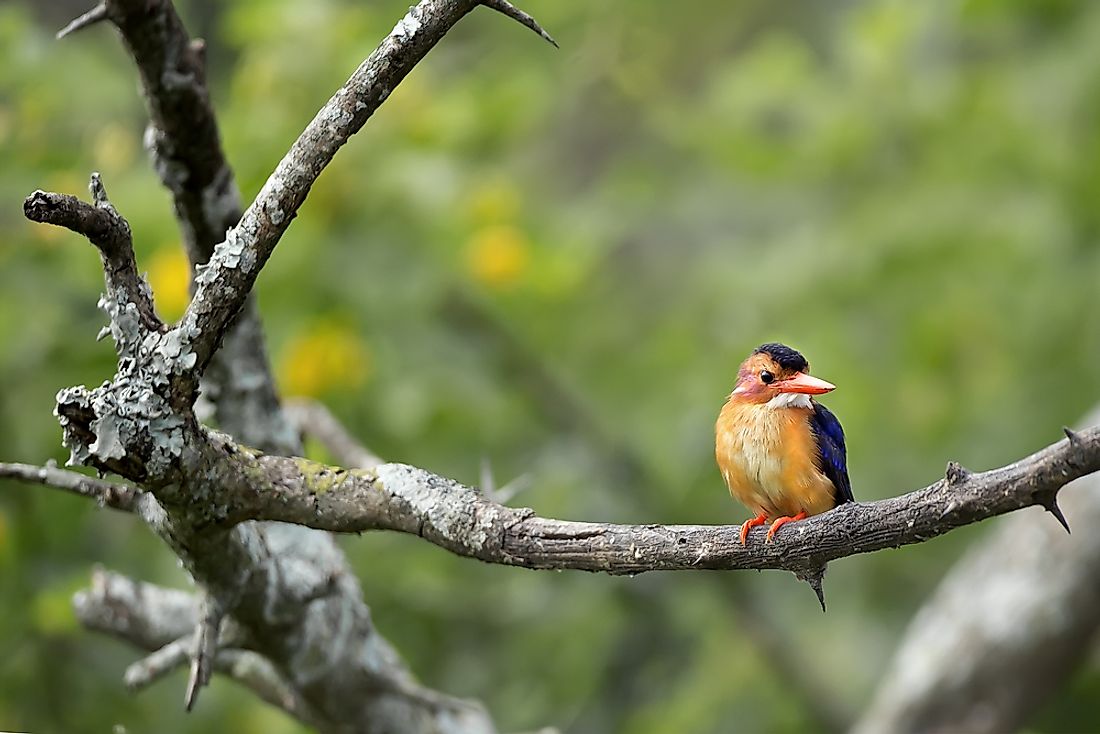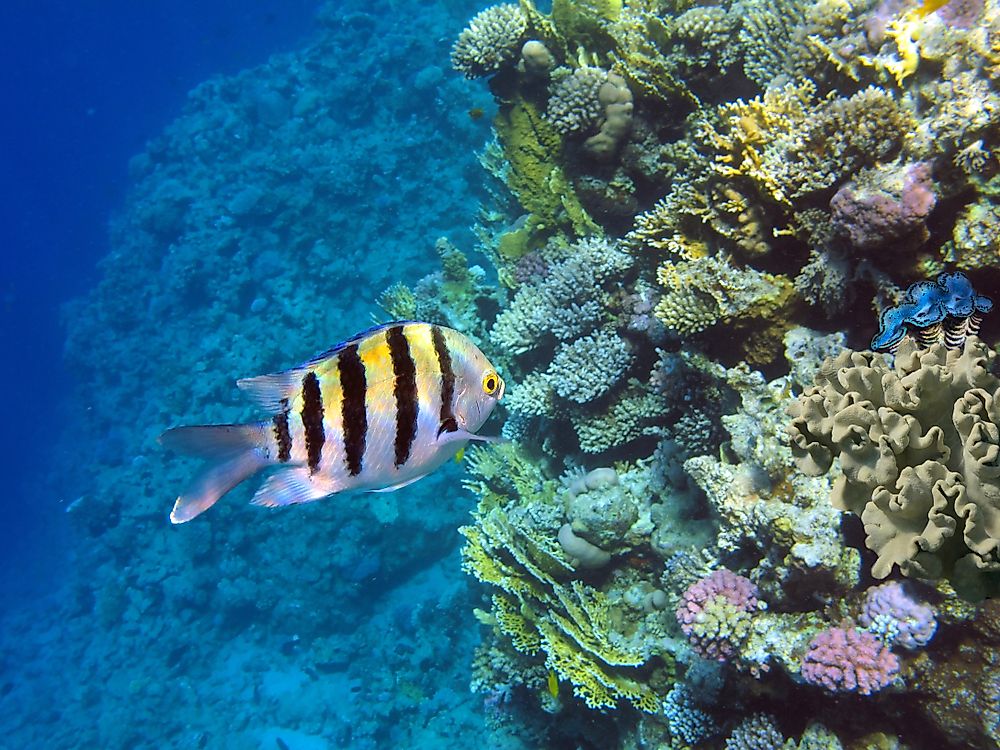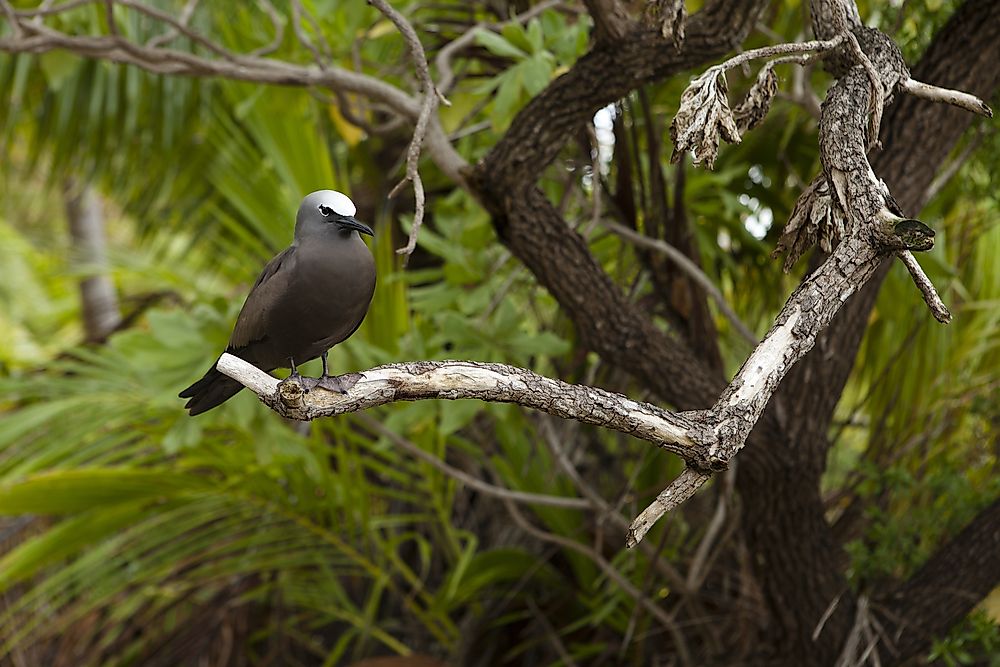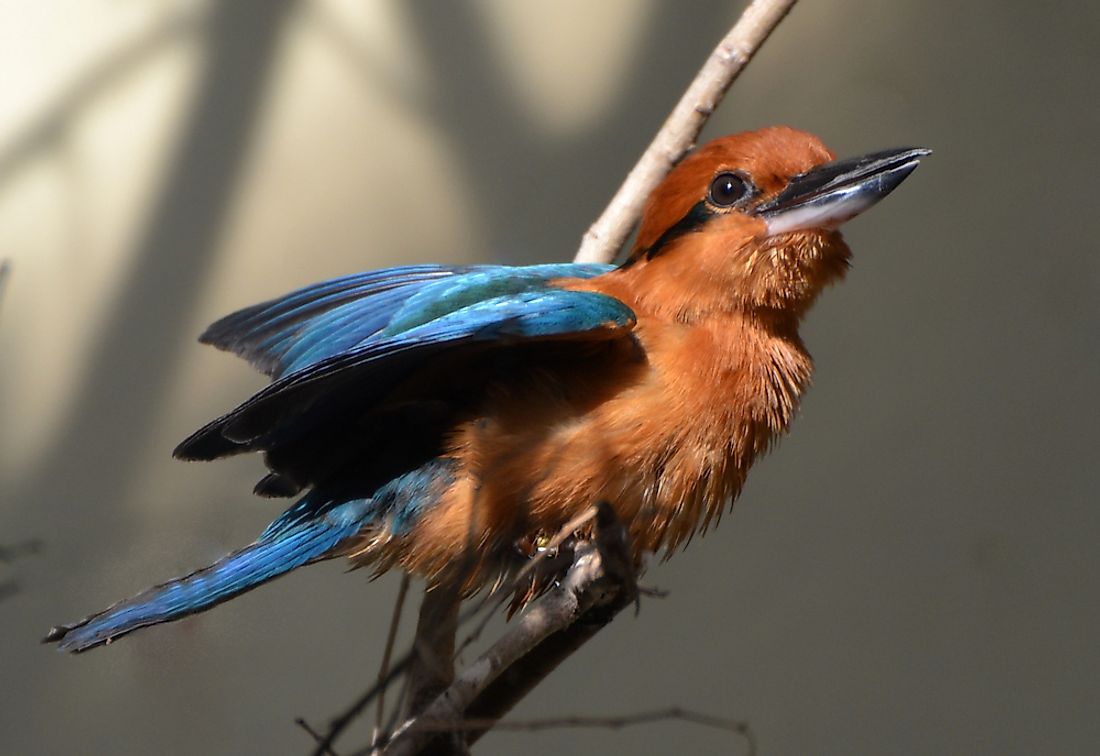The Unique Animals of Guam

Guam is the western-most island territory of the US. The island is 210 square miles in size and is home to an estimated 162,742 people. The economy of Guam is highly reliant on tourism due to its tropical climate and white sandy beaches. Most visitors rarely venture inland and explore the island’s unique flora and fauna. The island’s habitat is home to rare species of fauna that can only be found there such as the Fat Guam partula and the Guam rail. Other species that are and were found on the island include the Guam Scorpion-fish, the Guam Flycatcher, Guam kingfishers, the Guam flying fox, Guam Reed-warblers, Deep Water Redfish, and the Brown Noddy among many others. The ecosystem in and around Guam is truly unique!
Scissortail Sergeant

The Scissortail Sergeant (Abudefduf sexfasciatus), also known as the Damselfish, is a unique species of fish. The fish gets its odd name from black stripes that run vertically on the sides of its body. The body of the fish is oval and has a tail with black stripes that is heavy forked. An adult Scissortail Sergeant fish can grow up to 6.693 inches, but most adults have an average length of about 5.5 inches. The fish predominantly feeds on zooplankton and is highly territorial. During the mating season, the Scissor Sergeant fish are observed to pair together after the male clears a patch for the eggs. The eggs normally adhere to the substrate and are guarded and aerated by the male until they hatch.
Brown Noddy

The Brown Noddy (Anous stolidus) is a bird commonly found on tropical beaches. The Brown Noddy has a distinct white crown on its head and a forked tail. The rest of its body has a chocolate brown plumage. The Brown Noddy has a wingspan of about 30 to 34 inches and is between 15 to 18 inches in length. The bird usually nests on short trees, cliffs, and shrub. Before mating, the male and female Brown Noddy have nuptial displays, this is followed by courtship which includes feeding, flights and the presentation of freshly caught fish to the female. After mating, the female lays a single egg that is pinkish. The eggs hatch after an incubation period of about 33 days and the chick reach the weight of the mature birds within 3 weeks.
Guam Reed-warble
The Guam reed-warbler (Acrocephalus luscinius), which is also known as the nightingale reed-warble, is a unique bird that was endemic to Guam. The songbird which was locally known as the Ga’Karissa is currently classified as extinct and was last seen in the late 1960’s. The name Ga’Karisa means “that which lives among the reeds.” The nightingale reed-warbler measured around 7 inches in length and was yellowish with shaggy feathers around its head. The Guam reed-warbler is thought to have been driven to extinction by the introduction of species such as the brown tree snake and the loss of habitat due to the introduction of the ivy gourd which destroyed tree canopies where the birds built their nests.
Deep Water Redfish
The Beaked redfish is also known as the Deepwater Redfish (Sebastes mentella). It is currently classified as a vulnerable species and is commercially exploited. The Deepwater Redfish is commonly found in lagoons, along outer reef flats, and in estuaries. Mature fish can reach up to 28 inches but usually have an average length of about 18 inches. The Deepwater Redfish normally feed on small fish and can be found at depths of about 980 feet. The greatest threat to the species is large-scale commercial fishing.
Guam rail
The Guam Rail (Gallirallus owstoni) is a rare bird that is native to Guam and is currently extinct in the wild. It is only found in protected environments under human care. The Guam rail is virtually flightless and normally walks and runs while making very little noise. The birds are usually dark brown and have white stripes towards the legs and a lighter compression under its neck. The birds are omnivorous and prefer feeding on insects, snails, fish, seeds, and melons. A female Guam Rail usually lay between one and four eggs in a shallow nest that is built by both the male and female. It is thought that the birds were driven to near extinction by the brown tree snake.
Guam Flycatcher
The Guam Flycatcher (Myiagra frecycineti), also known as Freciynet’s Flycatcher, has been extinct since 1984 and was endemic to Guam. The bird was about 5 inches in length with males having a distinct glossy blue-black coloration while the females had a brownish gray coating. It is hypothesized that the probable cause of its extinction was the brown tree snake.
Guam kingfisher

The Guam Kingfisher was also known as the Ryukyu Kingfisher and is currently extinct in the wild. It can only be found in breeding programs in protected environments under human care. The birds are usually brilliantly colored and measure between 7.8 to 9 inches. The species was driven to near extinction by the brown tree snake.
Guam scorpionfish
The Guam Scorpionfish (Scorpaenodesguamensis) is commonly referred to as the Shore Scorpionfish and is found around sandy bottoms and inshore rock surfaces. The Guam Scorpionfish measures about 5.5 inches in length and is usually well camouflaged and feeds nocturnally on small fish.
Guam flying fox
The little Marianas fruit bat, also known as Guam flying fox, is currently an extinct species. The species had a greyish head and were golden brown along the sides of the neck while the rest of the body was brown-dark brown. The Guam flying fox was about 6 inches in length and had a wingspan of about 28 inches. It was likely driven to extinction by loss of habitat and hunting.
Fat guam partula
The fat Guam Partula (Partula gibba) is a land snail that is mainly found in the Northern Mariana Islands as well as Guam. It is a species that belongs to the air-breathing terrestrial snail in the family of Partulidae. It varies widely in color, and it was abundant at one time. Their population has dropped significantly as a result of habitat destruction and predation by Euglandina. Euglandina rosea, which is a cannibal snail was introduced in the 1970s as part of the biological control program of the African snail (Lissachatina/ Achatina fulica). However, they consumed the fat Guam partula and other species of partula snails. This led to 50 species of partula going extinct, and about 11 species now living in captivity.











